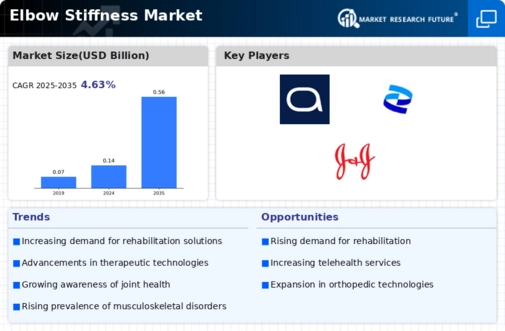Market Trends
Key Emerging Trends in the Elbow Stiffness Market
The market is growing as elbow stiffness rates rise. Elbow stiffness is developing globally due to sedentary lifestyles, aging populations, and sports accidents. Elbow stiffness treatment is being advanced by computers and telephones. Patient options for more effective and less invasive arthroscopic and minimally invasive operations are growing. Because people choose non-surgical therapies, physiotherapy and rehabilitation are in demand. The need for faster recovery, fewer post-op complications, and patient comfort drives this trend. Elbow stiffness is treated using regenerative medicine. Platelet-rich plasma (PRP) injections and stem cell treatment are becoming more popular because they may rebuild tissue, decrease inflammation, and enhance joint function. Elderly population growth boosts elbow stiffness market trends. Elbow stiffness has grown owing to the rising senior population and musculoskeletal problems. Demographic change should support market expansion soon! Healthcare providers and manufacturers emphasize patient-centered elbow stiffness therapy. The industry prioritizes therapeutic customisation to satisfy patient demands, enhance quality of life, and improve long-term results.Partnerships between pharmaceutical companies, research groups, and medical institutions are growing. These collaborations pool resources, share information, and accelerate therapy development to create a dynamic elbow stiffness market. The expanding understanding of elbow stiffness, its causes, and treatment options is affecting market dynamics. Healthcare professionals and organizations actively establish educational programs to educate patients and practitioners about prevention, early detection, and successful treatment alternatives. Elbow stiffness has an economic impact due to higher diagnostic and treatment expenses. Due to government and healthcare system reinvestment in musculoskeletal diseases, the elbow stiffness market is expected to grow. Regulatory issues, financing issues, and limited access to contemporary healthcare facilities in some places hinder market expansion. Despite positive developments, these problems provide barriers. These obstacles must be solved for the elbow stiffness market to continue growing.

















Leave a Comment